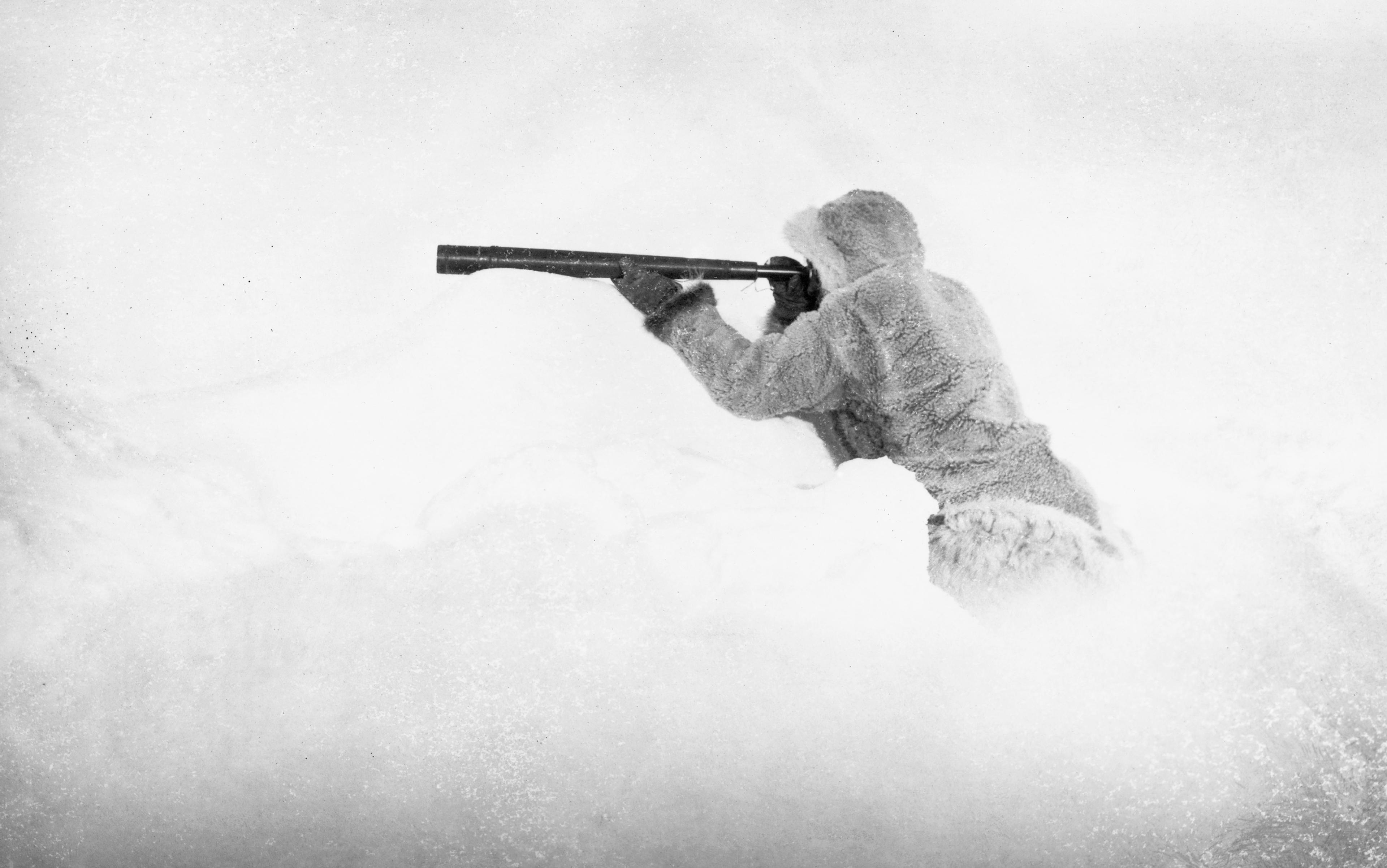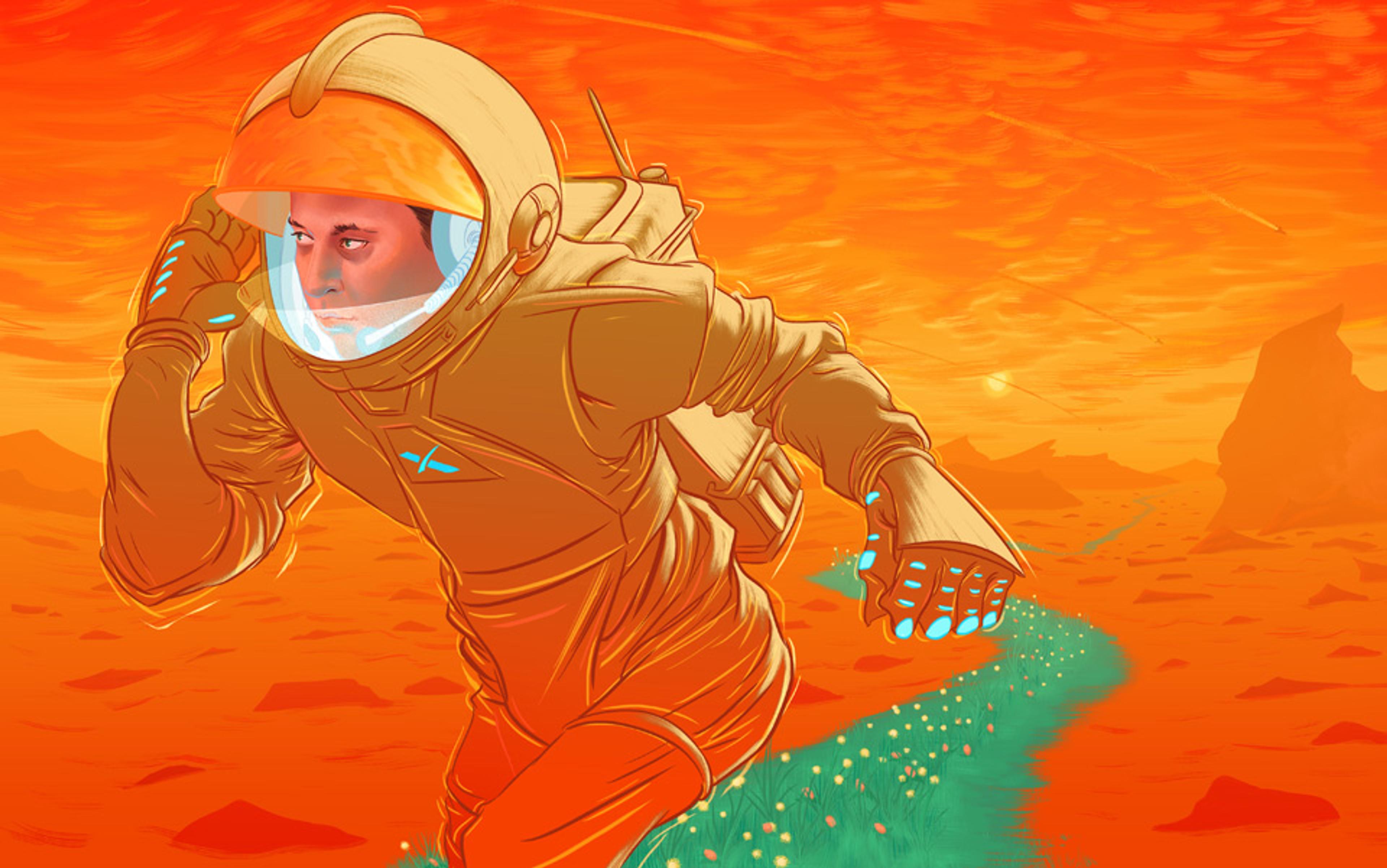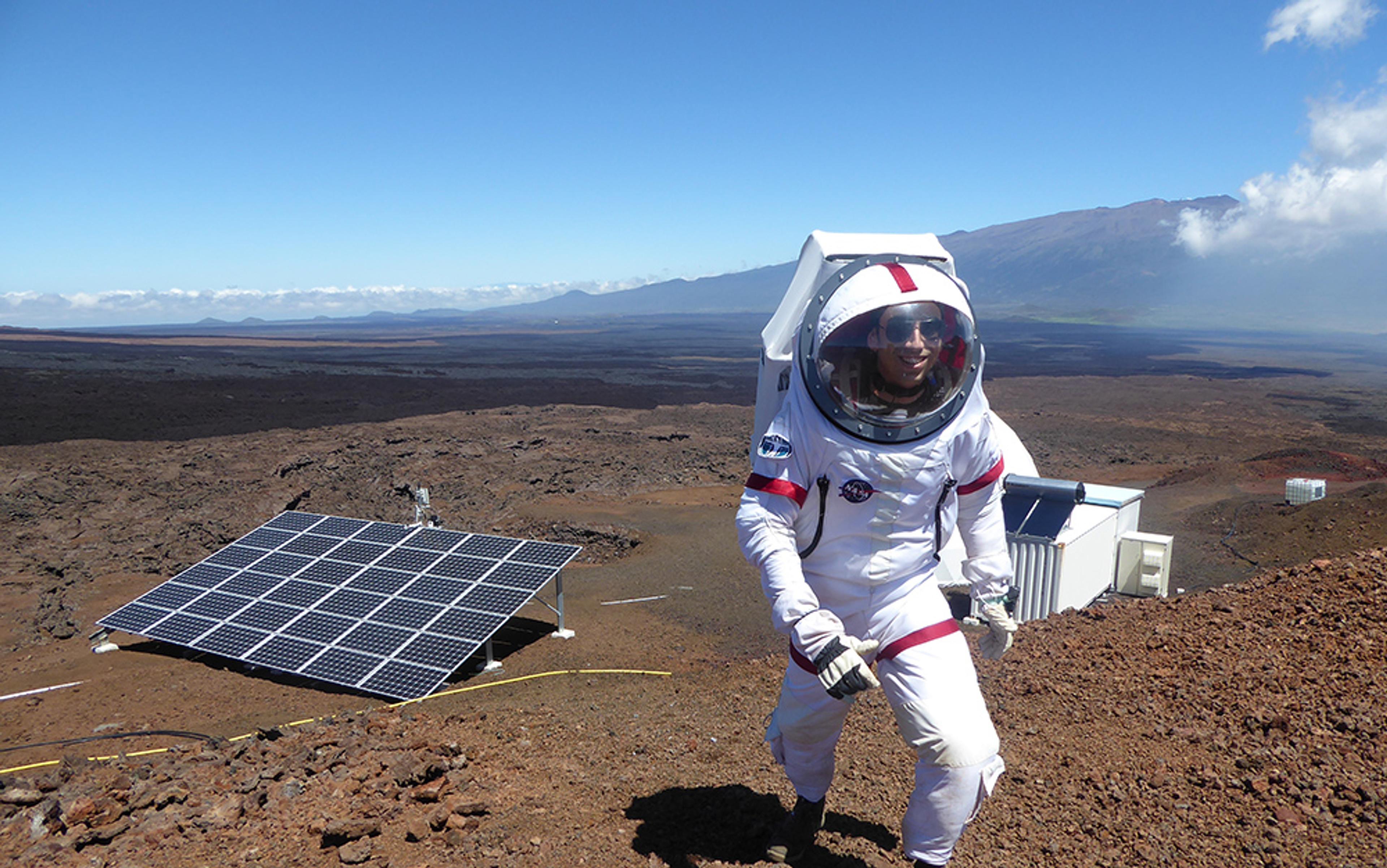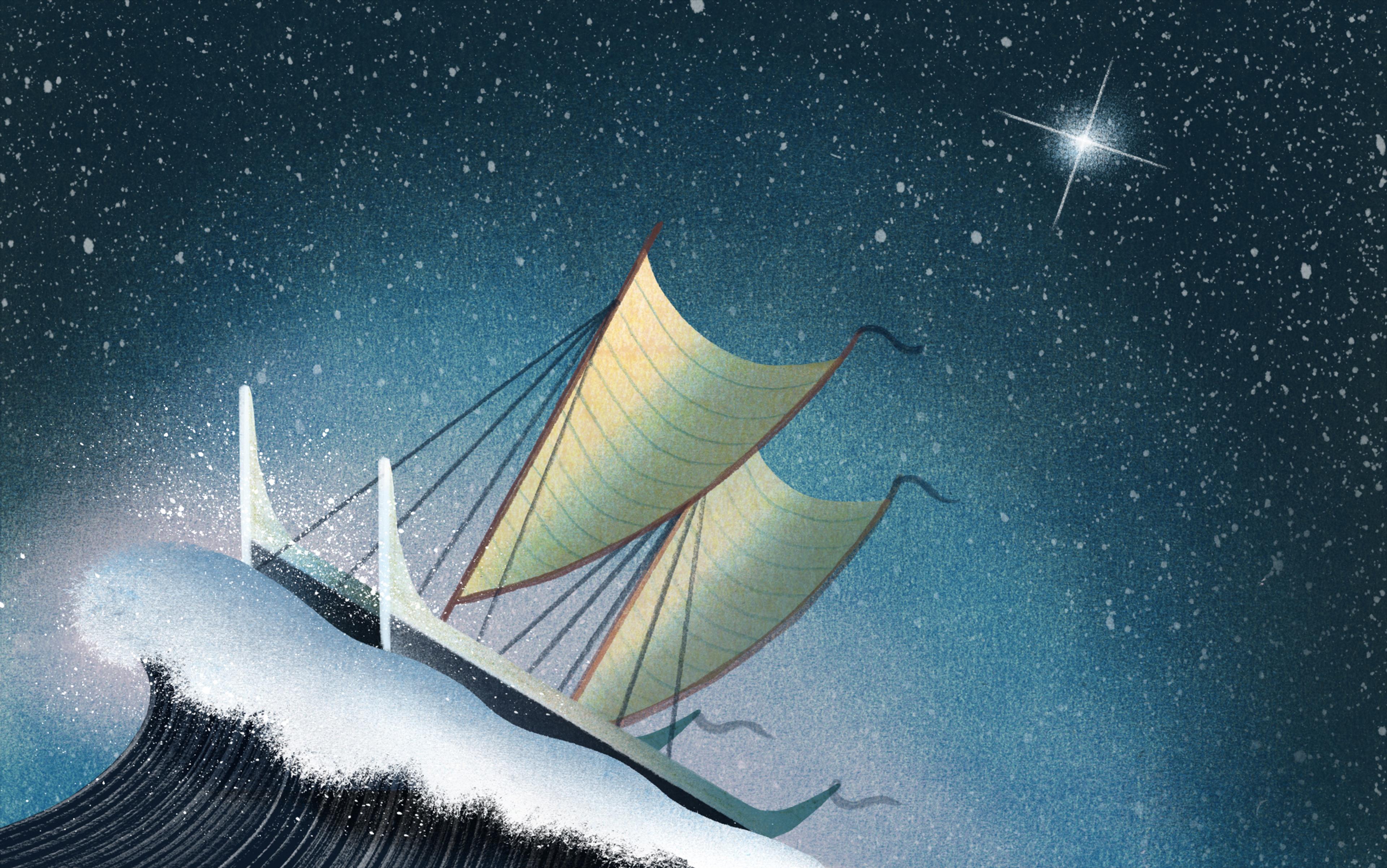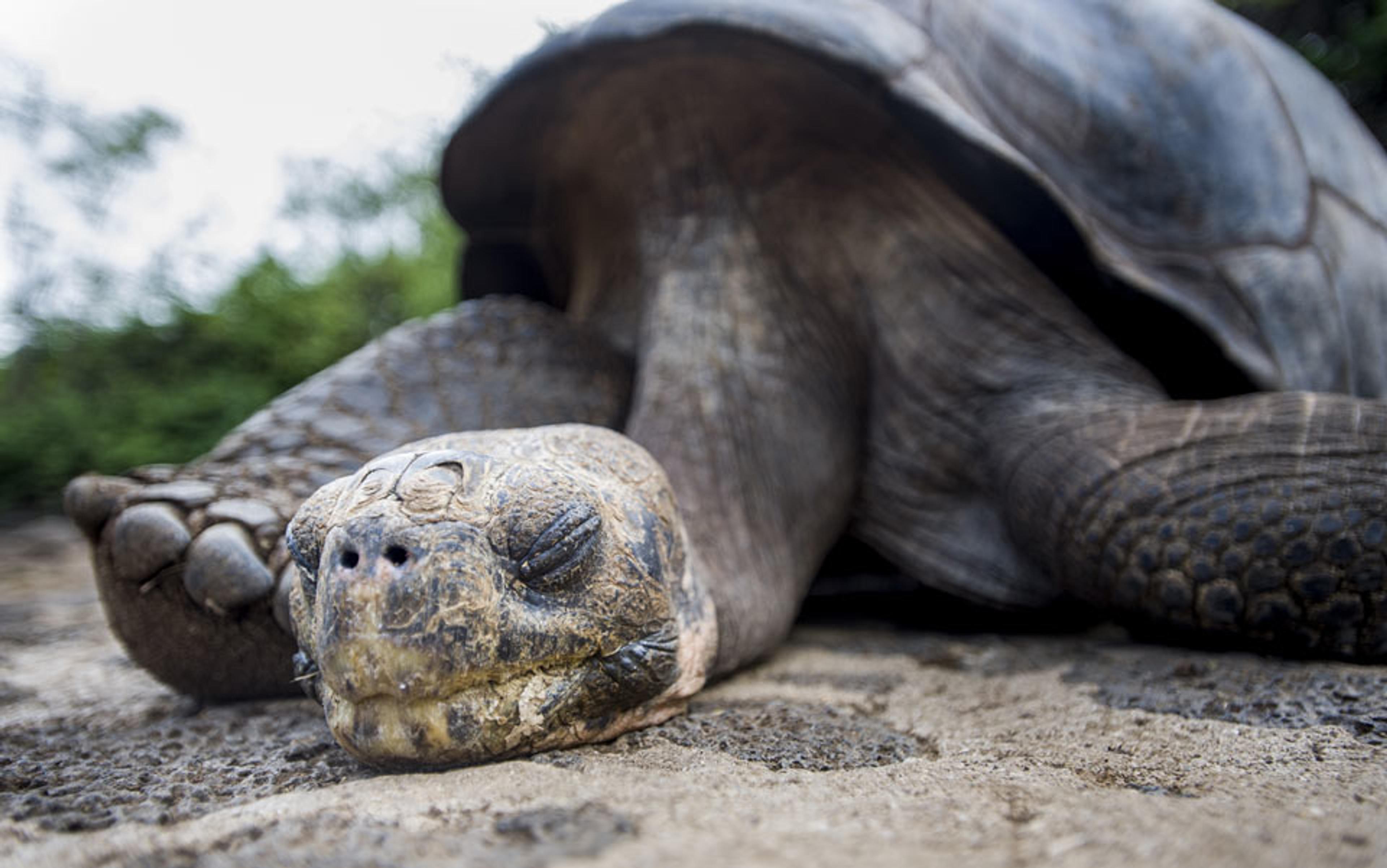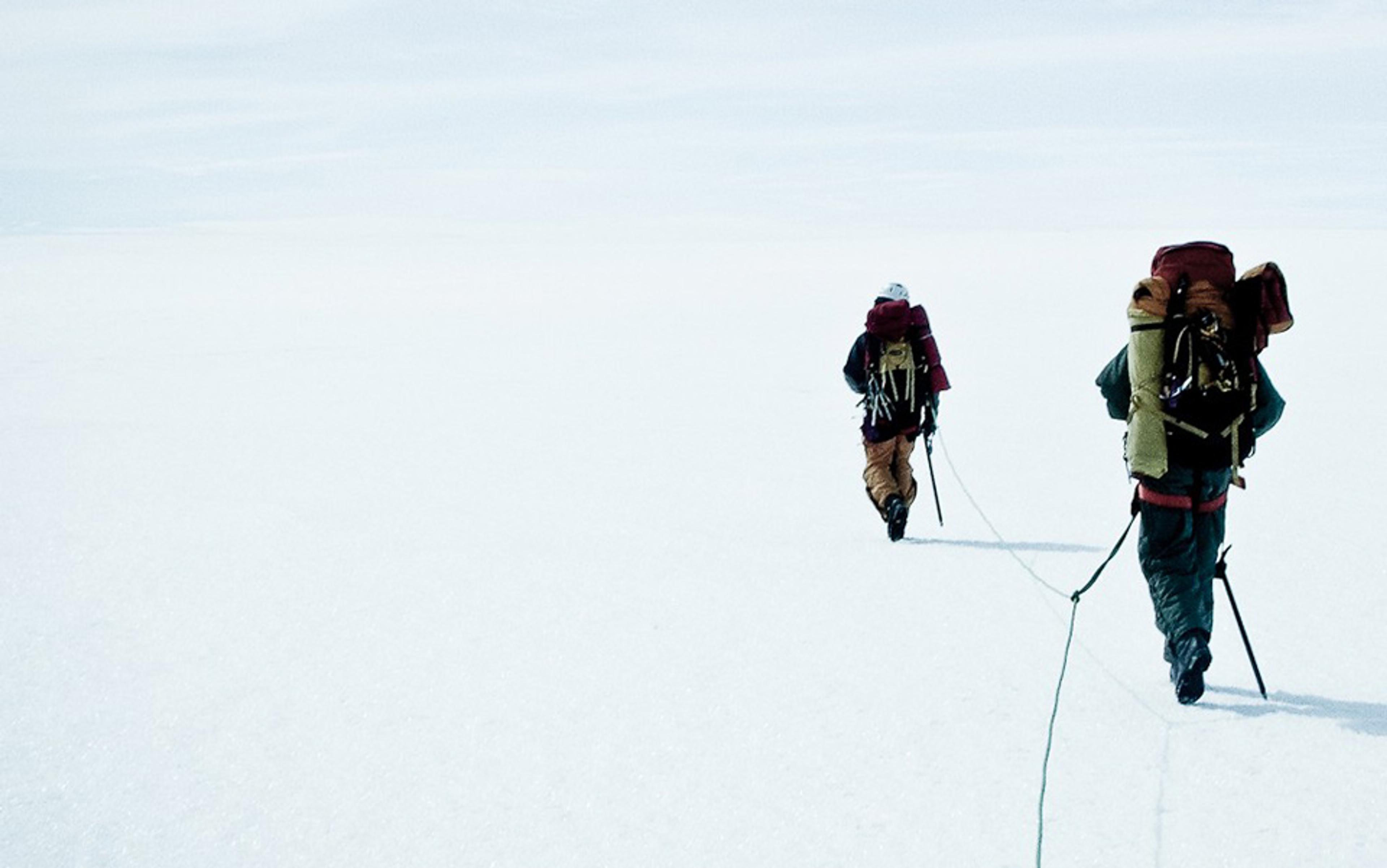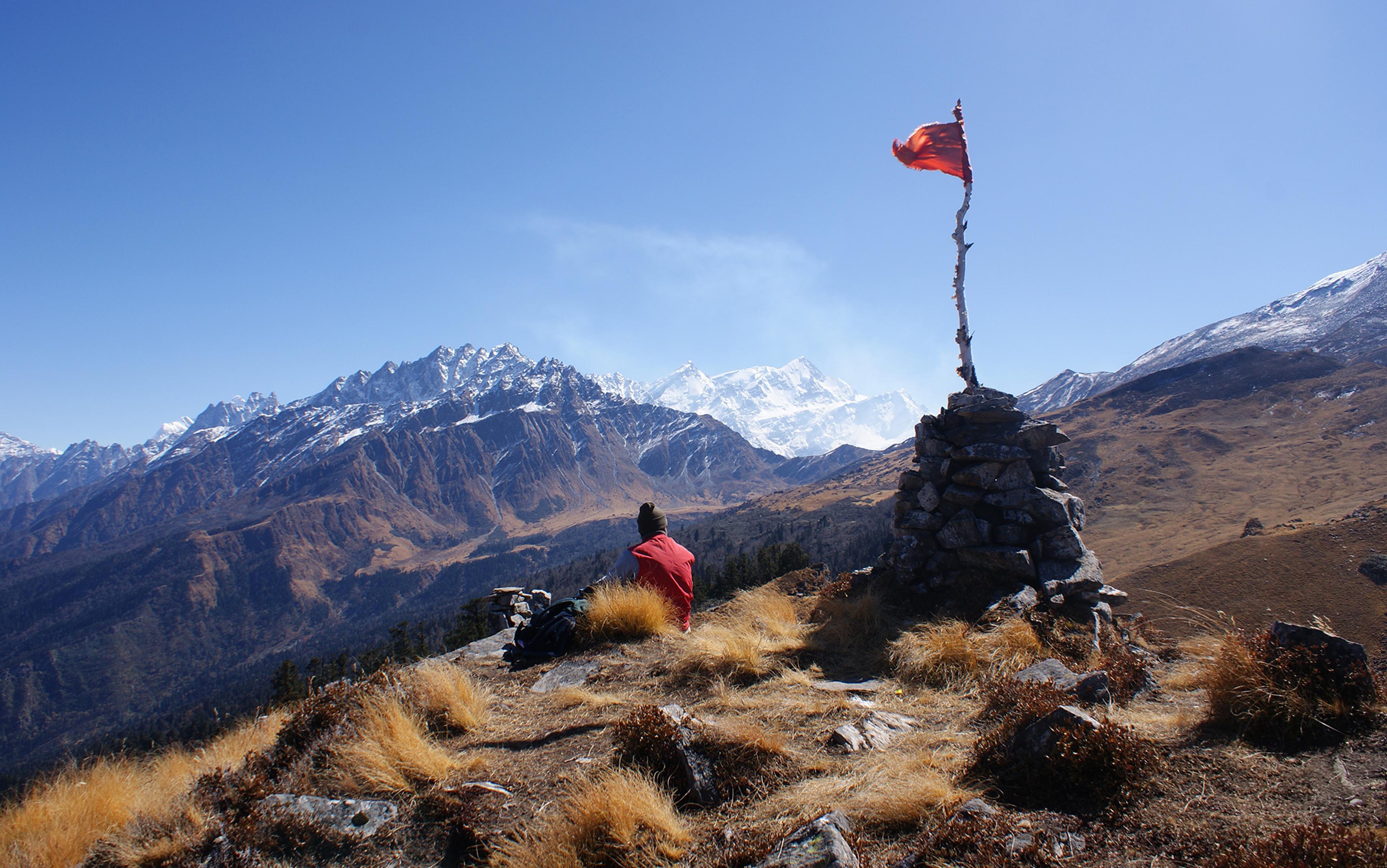First, there is nothing. From all appearances, the fast ferry, whipping through the water in the early morning sun, is headed out into the cold wastes of the Atlantic. But then a shimmering line appears on the horizon. As minutes and miles pass, it grows no taller but, eventually, the black profile of a row of loblolly pines, tossed by the wind, comes into focus.
There is land out here after all; flat, low land, its highest point only 28 feet above the waves. This fragment of coral shelf is the northernmost of the British Virgin Islands, the last before the open ocean, and it has a completely different character from its gaggle of southern sisters. While they are steep green mountains rising from the sea, this place is so low that its Spanish name, Anegada, means ‘covered in water’ or ‘shipwrecked’. The other islands tend to be home to thousands of people and are serviced by commercial flights and ferries. Anegada has a boat every two days or so, and a scant few hundred inhabitants, most of them in the lone settlement called The Settlement.
Looking around at the other people on the ferry, it seems that some might be headed to jobs on the island, in its scattering of restaurants and businesses. A few are tourists come to stay in the handful of basic guesthouses and eat the sweet lobster that is a local speciality. My husband and I came out here because it was the edge of the map. He suggested it after seeing it way out on the rim of things, and I, not totally sure why we were going, made the plans.
The island’s interior is dominated by vast salt ponds, which I reach that first morning by picking my way through shrubs from the single road. Their water is an unearthly blue, reflecting the sky. There are no power lines in view, no cars passing. There is a tremendous stillness, a bone-white quiet. Minute fish slip through the shallows, and a sandpiper ducks and feints, running fleetly into the underbrush. It smells faintly of sulfur.
Contributing to the aura of quiet desolation is the knowledge that more than 300 ships have been wrecked on Anegada’s vast encircling reef. For many years, it provided the inhabitants with an unusual cottage industry – looting. ‘There is little to disturb the lotus-eating existence of the Anegadan; his sole diversion, indeed, is a “vessel on the reef”,’ wrote Robert Schomburgk, a penniless European naturalist who spent several months on the island in 1831. He is the only person to have written about Anegada at any length. Schomburgk, who undertook the mission in hopes of selling articles and specimens to English naturalists, was the person who revealed the existence of the northwesterly current that swept ships stealthily onto the reef at night when they thought they were safely south. He went out in a small boat and, in lieu of an anchor, dropped a kettle full of rocks into the waves. His vessel swung around it, showing the direction of the water’s pull.
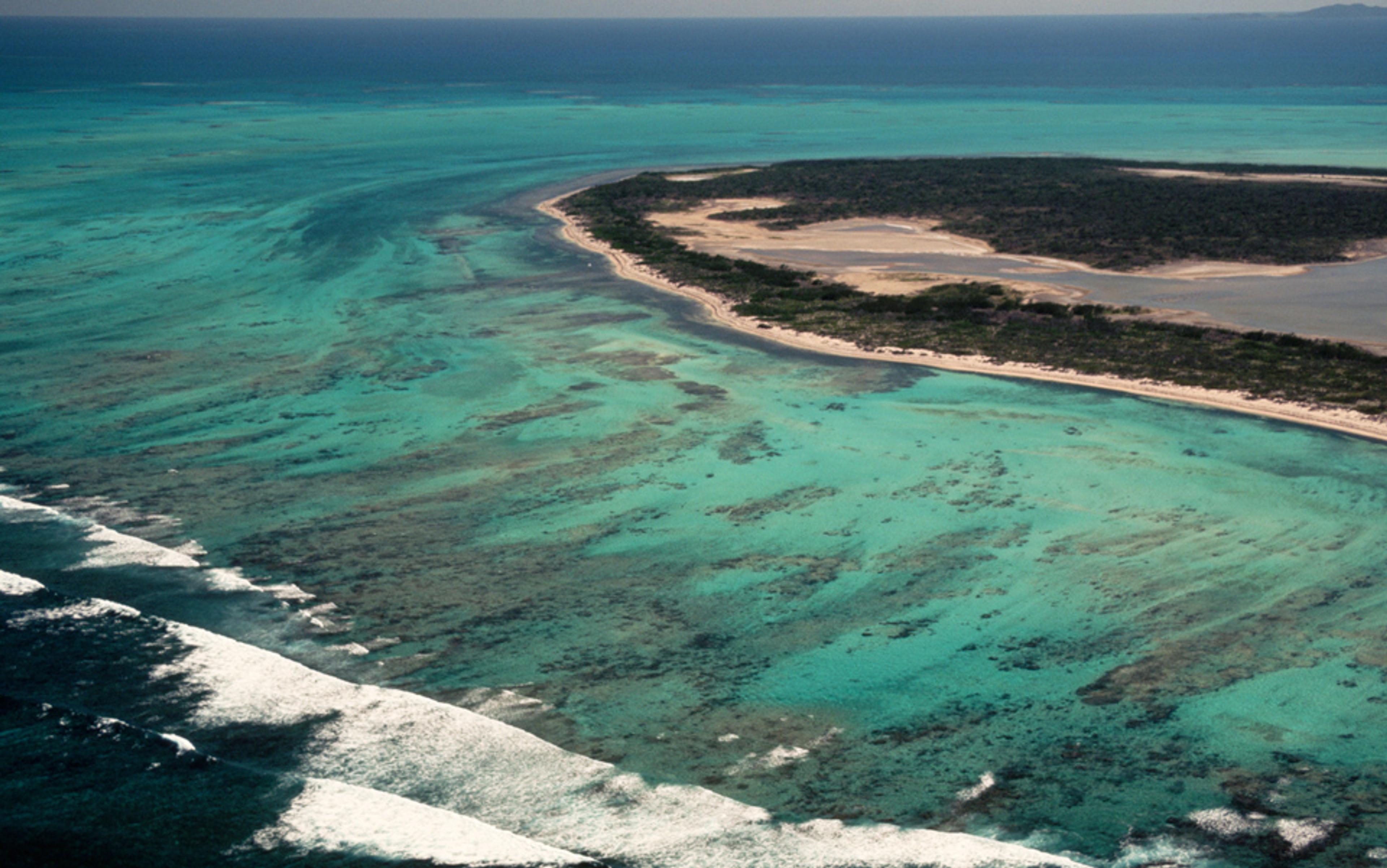
The reefs surround Anegada in the British Virgin Islands. Photo by Bob Krist/Corbis
On the island, Schomburgk was guided by a local who, unlike the naturalist, seems not to have felt the urge to move on. I too met several people who had lived on the island all their lives. Wilfred Creque, who runs a small bar amid the sand and grasses at a place called Pomato Point, was born on the island. He has skin the colour of burnished teak, with a few white hairs showing bright against his jaw. Having tried out life on St Thomas, the most urban of the Virgin Islands, among other places, he chose to return home. A small, sunny room to the side of the bar contains a bazaar of objects he’s collected from the beaches all his life. Heavy coins, cannon balls, fragments of china, a porcelain doorknob, spoons – he points out the indigenous pots that are the oldest objects there.
But some people, from farther away, have slightly odder stories. At a beach bar on the rugged northern shore, a fire-juggler’s wife tells me about their trajectory. He is a skinny hippy with a trailing grey beard, round dark glasses, and a faded patchwork cap, and he pushes a broom quietly while she talks to me. Back in Michigan, she explains, she worked as a costumer at Renaissance fairs. Here, they live in a tent in the sea-grape bushes behind the bar’s gift shop. In return, they put on a show for the bar’s patrons.
Even in the hurricane season?
She raises her eyebrows. ‘We’re not crazy.’ From June to November, they return to Michigan. Today, a chilly day in January, clouds mass like a fleet of ships – frigates of vapour – off the northern shore. They dwarf the low island, prompting a kind of vertigo.
People tend to go out to the edges of things. Which things, exactly, depends on the era: 1.8 million years ago, our early ancestors moved overland out of Africa. Thousands of years ago, early Polynesians sailed outrigger canoes over the horizon, eventually populating the entire Pacific. In the late 19th century, nearly every year a new batch of European explorers headed northwards, throwing themselves into the jaws of the ice. Today, the planet’s atmosphere seems to be the edge of choice. It is not clear how many people applied to be on Mars One’s much-discussed mission to colonise the Red Planet, but what is clear is that a one-way ticket away from Earth sets some people’s eyes alight.
Going to an inhabited island on the edge of the Caribbean is a far cry from an Arctic expedition. It’s even farther from heading to Mars. But out here, where all the things that a greater massing of humans brings, from hospitals to seawalls, are missing, and where the least wave threatens to swamp the land, I wonder: are they connected?
That the urge to explore is glorious and universal is one of today’s most persistent romances. It has yielded great rewards for the people who go and for their societies; leaving the known is a fast way to learn new things. The Norwegian explorer Fridtjof Nansen undertook a daring journey in 1893 to test a theory that an east-west current ran under the Arctic ice. He jammed his boat, the Fram, in the ice pack to see whether the current would pull it northwards in a long arc, eventually releasing him into open water 2,000 miles away. It took three years, with the crew gamely sitting it out. But it made him a national hero. More recently, the Apollo 15 astronaut Dave Scott, standing on the moon in 1971, said to those back on the home planet: ‘As I stand out here in the wonders of the unknown at Hadley, I sort of realise there’s a fundamental truth to our nature: Man must explore.’
‘My life’s mark is accomplished. I have got the North Pole out of my system’
Yet exploration is not as obvious a thing to revere as you might think. It is often absurd. Like many explorers of his time, the American Robert Peary, who made his first Arctic expedition in 1886, had a monomaniacal fixation on getting farther north than anyone else. It didn’t matter that the place where the lines of longitude happen to converge was more or less indistinguishable from most other places on the ice cap. Making history with a superlative act prompted almost unbelievable exertions from Peary and his compatriots, who regarded each other as nemeses in the quest for the Pole.
The quest consumed their lives. At Peary’s summer house on Eagle Island in Maine, in the miniature tower that he built to be his study, you can read excerpts from the logbooks of his missions. As the pink and yellow light pours in through stained-glass windows, illuminating a chamber where you must wear slippers to protect the wooden floor, the compulsion feels especially outlandish. ‘My life’s mark is accomplished,’ he wrote in 1909, after 25 years of failed attempts, the expenditure of millions of dollars, heavy media coverage, and a marriage for which he was mostly not present. ‘I have got the North Pole out of my system.’
For my own part, I’ve spent most of the past two years aloft, with no fixed address of my own, trying, perhaps, to get something out of my system as well. The absurd moments have been many – being stranded at the wrong hotel in a provincial Chinese city, laying siege to consulates for visas, sleeping in airports, taking long trains, flights, boats and buses out to the back of beyond, for unclear gain.
Peary’s era, like ours, was a time when Western societies glorified leaving the pale. But clearly, not everyone goes so far. You can almost picture a spectrum, with people who stay at home – even if home is a remote island – at one end, and laid out along it to the other end the itinerant fire-jugglers, chronic travellers, Arctic explorers and those willing to die on Mars, all of them giving in to the urge to leave, in proportion to some particular quality of the mind.
In the late 1950s, the psychologist Marvin Zuckerman, now professor emeritus at the University of Delaware, was spending a lot of time locking people up. Sometimes they were in an iron lung, to keep them from moving; sometimes they had to wear heavy gloves, to keep them from feeling anything. The dark, sound-proofed rooms sometimes had a bed or a chair, sometimes nothing. Zuckerman was studying the effects of sensory deprivation.
Individual responses varied markedly, he found. Some people would get bored. Some enjoyed it. Some would sing to themselves to fill the emptiness; some would get anxious. It was an odd variety, and in an attempt to classify it, he and his colleagues developed a scale to assess how much stimulation people needed to feel satisfied. The tendency to become restless in the absence of something new they dubbed ‘sensation-seeking’. It was to become the focus of Zuckerman’s more-than-60-year career.
By answering a questionnaire that he and his colleagues have developed, people can be typed according to four different sensation-seeking traits. People who score high in thrill-seeking have a penchant for physically dangerous activities, such as sky-diving and base‑jumping. Disinhibition is a trait associated with a preference for out-of-control activities, such as risky sex or heavy drinking. Experience-seeking involves looking for novel experiences in areas such as art, music, a non‑conformist lifestyle or travel. Boredom-acceptability is a measure of aversion to dullness. Together, the picture painted by these measures helped to describe the variation in human interest in novelty. In studies with twins, it even helped to show that the desire to seek sensation or to be satisfied without it is at least partly heritable. More recently, sensation-seeking has been traced to the regulation of the neurotransmitters dopamine and serotonin, as well as cortisol, a hormone whose levels are an indicator of stress.
‘It’s a big deal to leave. But if you don’t do it, you have no chance of reproducing’
In two decades of watching vervet monkeys, Lynn Fairbanks, Director of the Center for Primate Neuroethology at the University of California, Los Angeles, has found similar novelty-seeking tendencies in our primate cousins. She places unfamiliar objects in their enclosures, including some that look like they could be deadly creatures, and watches as, over and over again, some monkey darts up to it. For vervets, the survival benefits of daring are clear. Adolescent males must leave the troops where they have grown up, to try to join another group where they will be higher up the totem pole, and their cortisol levels drop when the time is ripe, which might be an adaptation that enables them take the risk of entering the unknown. ‘It’s a big deal to leave,’ Fairbanks says. ‘It is a risky thing to do. But if you don’t do it, you have no chance of reproducing.’
Human beings don’t need to do this, not in the same way that vervets do. But a group that includes some people who will leave can reap real benefits, explains Lynette Shaw, a sociologist at the University of Washington, who studies how people assign value. Take the example of an imaginary tribe of people, faced with choosing a spot in a varied landscape to settle. There are likely to be some places where the group will certainly die, some where they will thrive, and a large number of places that are in-between. Having some people in the group who want to explore is useful because, while most of them will not make it, some will return with fresh information about the best places to live.
The key, though, is that there must also be people who don’t want to ramble, who turn their talents and energies to exploiting, to the best of their abilities, the place where they have settled. If there are too many explorers, the group is likely to starve. ‘There’s a tension between those two,’ Shaw says, between explore and exploit. The right mixture of both will make the group more likely to find a better-than-average place to settle and make the best use of it. The explore-exploit dilemma is from management science, not anthropology. It doesn’t describe what has necessarily happened: it’s just the most efficient route to the best outcome for a group. But it is the kind of thing that might have been generated under evolutionary pressure, and it helps to put a frame around the urge for going.
‘It’s key to realise that the most functional systems are the ones that have a variation,’ Shaw remarks. ‘A good society would be better at letting people know that there is a variation.’
On the south shore of Anegada, there is a place where the ocean is shallow for miles. Walk as you might toward the horizon, the water gets no deeper than your waist. As I pace outwards, ghostly crabs swoop away from my steps. The water and the sky are the same colour, and only the clouds in the latter show the difference. Fly fishermen come to the flats to hunt the elusive bonefish, translucent creatures, but none are here now. That unearthly quiet reigns. An abandoned restaurant, its sea-green paint flaking, goes to pieces in the mangroves on shore. It is not easy to make a living here. The minimum wage is $4 an hour. I think of the fire-juggler, living on tips.
Many Anegadans leave for better lives elsewhere, Creque tells me. But employment also brings some people here from other Caribbean islands, one inhabitant confides. She herself is from Jamaica, and has been working in a hotel on the southern shore for 12 years, eventually bringing over five relatives. She likes the isolation, the quiet. There is nothing to do here, she says, but be with family.
The owner of Neptune’s Treasure, the small hotel where we stayed, came to Anegada as a child. His father, a commercial fisherman, moved the family to the British Virgin Islands from Bermuda. When they got their land, they were the only people at their end of the island. The road was not yet built. The family still fishes – their catch is served in the little restaurant on the edge of the water where I talk to him as he has his morning coffee. ‘I love the peace,’ he says. He gestures at the southern islands, rising from the sea. ‘The rest of the world is so close. I don’t need to live in it.’
Going to Mars has never interested me. But like a pocket watch resembles a grandfather clock, it’s kin to my sojourn on Anegada. When I lived in Switzerland, where many people stay close to home, I tried to explain what I was doing, moving across oceans for unclear amounts of time, without the excuse of a job to make me go. ‘You mean, like a vacation?’ they’d ask. No, I’d say, but then fall silent, unable to explain why this seemed like a good idea. It doesn’t surprise Zuckerman at all. ‘Writers tend to be high in experience-seeking,’ he said.
Inspired by Schomburgk’s explorations, we find a sandy track heading east. White frangipani flowers wink among the organ pipe cacti and brush. Slabs of rough coral break up through the thin, silty soil, and kneeling down I see fossil brain coral, staghorn coral and shells on its surface, like flotsam of some immense, buried process. To the side of the track, there is a concrete square almost drowned in thorns. It is a well – five feet down, black water glints.
There is no sound but the whirring of doves as they flee, cinnamon wings flashing over the brush. Off to the east, I see a faint rise; maybe that’s the highest point, the 28-foot height. I study the plants sprouting from little holes in the coral. I stop my progress east near a pair of coconut trees, the only ones I can see.
It feels good to go no farther. I decide to try to work my way back home.
